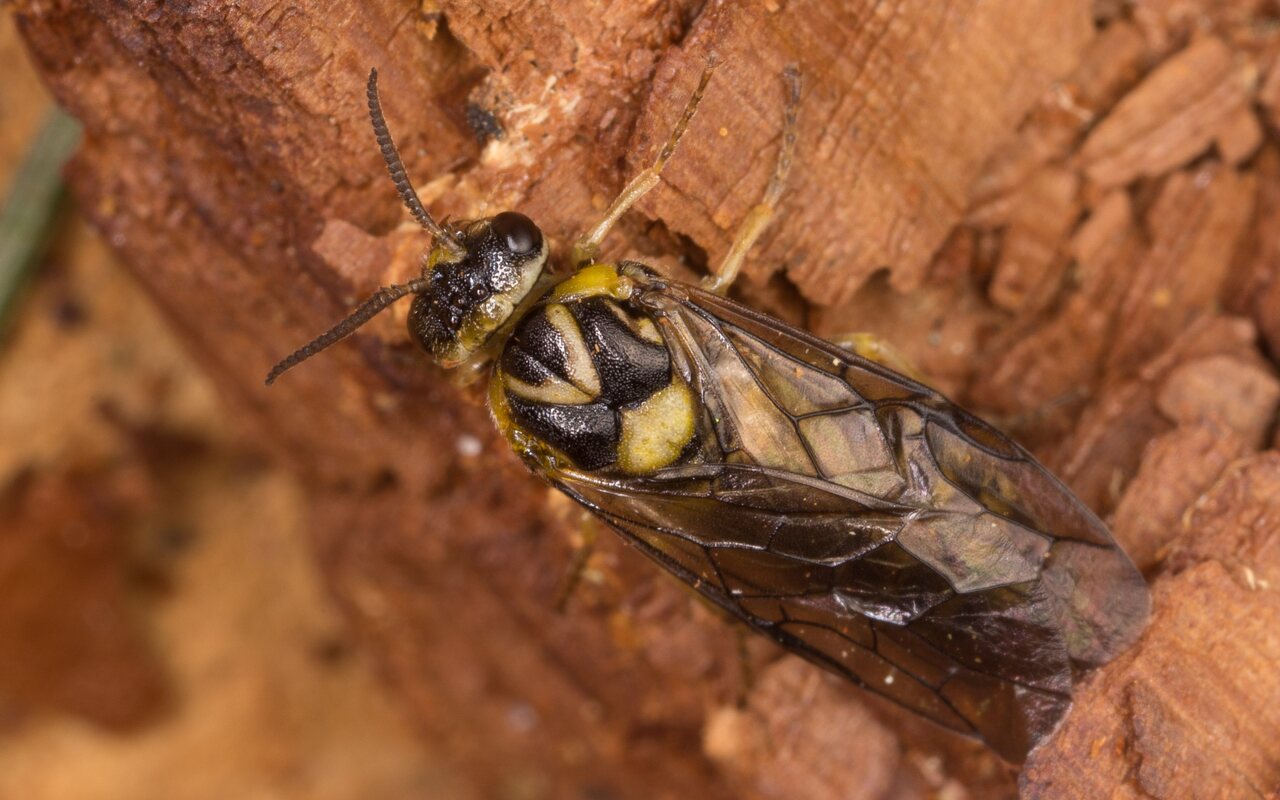
Diprion pini · paprastasis pušinis pjūklelis ♀
- common pine sawfly
- Gemeine Kiefernbuschhornblattwespe
- paprastasis pušinis pjūklelis
- parastā priedes zāģlapsene
- borecznik sosnowiec
https://en.wikipedia.org/wiki/Diprion_pini The species is widely distributed across Europe and Russia, and is present in Algeria, Siberia, and Turkey. Diprion pini is a serious pest of economic forestry, capable of defoliating large areas of pine forest. The larvae feed on pine needles.
Outbreaks of Diprion pini are eruptive, rising rapidly to large infestations after long latent periods; this makes monitoring difficult. Scots pines are not generally killed by a single defoliation, but weakened trees may suffer increased attack by bark beetles, buprestid beetles, and pine weevils, which can kill trees, as can repeated defoliation. During high rates of defoliation, the growth rate of pines decreases significantly. Climate change appears to be allowing the pest to damage forests increasingly far north, such as in Scandinavia. Since it feeds until late in the autumn, affected trees are weakened and often die in the subsequent winter.
‥
0 comments
Add a comment